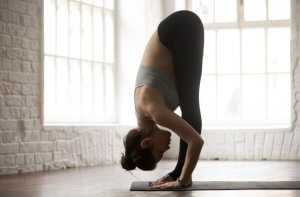Best Benefits of Exercise for Joint Health

Practicing sports on a regular basis helps to prevent and alleviate many of the discomforts associated with rheumatic diseases. Therefore, we’ll explain the benefits of exercise for joint health. This will help you to become motivated and practice sports daily.
Joints are structures where bones join together and most of the time these unions must allow for movement. The joint capsule, muscles, and ligaments all contain different tissues.
There are a wide variety of health conditions and issues involving the joints. We can also suffer from pain, better known as arthralgia, and joint inflammation that is known as arthritis. Practicing sports can normally help to reduce these conditions.
Benefits of joint exercise
As we have mentioned, practicing sports can help to preserve and protect different parts of our body, such as the bones, the locomotor system, muscles, ligaments, and cartilage. We explain the benefits of joint exercise in more detail below:
- Strengthens the muscles and other structures that surround the joint, providing greater support and resistance.
- Increases different ranges of mobility in the joints.
- Encourages flexibility.
- Promotes physical resistance.
- Helps with weight loss, which decreases the load on the joints.

Tips to start exercising your joints
Practicing sports requires prior preparation, so if you have never done this regularly, start gradually. We’ll give you some tips to begin as smoothly as possible, which will help you to avoid injury. This means that you can enjoy all of the benefits that exercise can have on the joints. Keep in mind the following tips:
Be comfortable
Wearing comfortable clothing and the right shoes is the first step to starting. In addition, you’ll have to hydrate yourself well and use sunscreen to protect yourself from the sun. Always take a large bottle of water with you when you exercise, to maintain hydration during physical activity.

Start with short walks
To practice sports, you can start by walking for about 10 or 15 minutes, about three times a week. In addition, as it’s not a demanding exercise, you can consider it a stroll and it will help to motivate you. As the days pass, you will realize that you are walking more and more, without having to force your body.
Include some resistance activities
Walking is an aerobic exercise that helps us to gain physical strength. However, to improve muscle mass and strengthen muscles and joints, it’s necessary to include some resistance activities. Use a few weights that are not too heavy.
Avoid practicing sports after eating
Performing physical activity in the afternoon will be easier, and it can help your joints to feel less rigid the next morning. You should avoid exercising in the hours just before sleep because you’ll activate your body and mind, making it harder to rest.

Avoid exercising sensitive or inflamed joints
In the case of sensitive joints, it’s beneficial to raise your body temperature slightly, before you exercise, such as by taking a hot shower or bath. After finishing a sports session, you can massage the joint and apply ice. As a tip, you should never apply direct heat to an inflamed joint.
Remember that pain is a warning
If you feel pain when doing any type of physical activity, you should stop and rest. Evaluate what may have caused the pain and try to avoid repeating it in the future.
After physical activity, it’s normal to have mild discomfort
Fatigue and mild pain should disappear several hours after exercising and then, you should feel the same as before starting the activity. If this is not the case and there is persistent pain or new discomfort, you have to stop. You may even have to change the intensity or frequency of your training.
In conclusion, you have to be careful when practicing sports. You have to do it constantly and with the right intensity, and you can go on to achieve huge benefits for your joint health.
Practicing sports on a regular basis helps to prevent and alleviate many of the discomforts associated with rheumatic diseases. Therefore, we’ll explain the benefits of exercise for joint health. This will help you to become motivated and practice sports daily.
Joints are structures where bones join together and most of the time these unions must allow for movement. The joint capsule, muscles, and ligaments all contain different tissues.
There are a wide variety of health conditions and issues involving the joints. We can also suffer from pain, better known as arthralgia, and joint inflammation that is known as arthritis. Practicing sports can normally help to reduce these conditions.
Benefits of joint exercise
As we have mentioned, practicing sports can help to preserve and protect different parts of our body, such as the bones, the locomotor system, muscles, ligaments, and cartilage. We explain the benefits of joint exercise in more detail below:
- Strengthens the muscles and other structures that surround the joint, providing greater support and resistance.
- Increases different ranges of mobility in the joints.
- Encourages flexibility.
- Promotes physical resistance.
- Helps with weight loss, which decreases the load on the joints.

Tips to start exercising your joints
Practicing sports requires prior preparation, so if you have never done this regularly, start gradually. We’ll give you some tips to begin as smoothly as possible, which will help you to avoid injury. This means that you can enjoy all of the benefits that exercise can have on the joints. Keep in mind the following tips:
Be comfortable
Wearing comfortable clothing and the right shoes is the first step to starting. In addition, you’ll have to hydrate yourself well and use sunscreen to protect yourself from the sun. Always take a large bottle of water with you when you exercise, to maintain hydration during physical activity.

Start with short walks
To practice sports, you can start by walking for about 10 or 15 minutes, about three times a week. In addition, as it’s not a demanding exercise, you can consider it a stroll and it will help to motivate you. As the days pass, you will realize that you are walking more and more, without having to force your body.
Include some resistance activities
Walking is an aerobic exercise that helps us to gain physical strength. However, to improve muscle mass and strengthen muscles and joints, it’s necessary to include some resistance activities. Use a few weights that are not too heavy.
Avoid practicing sports after eating
Performing physical activity in the afternoon will be easier, and it can help your joints to feel less rigid the next morning. You should avoid exercising in the hours just before sleep because you’ll activate your body and mind, making it harder to rest.

Avoid exercising sensitive or inflamed joints
In the case of sensitive joints, it’s beneficial to raise your body temperature slightly, before you exercise, such as by taking a hot shower or bath. After finishing a sports session, you can massage the joint and apply ice. As a tip, you should never apply direct heat to an inflamed joint.
Remember that pain is a warning
If you feel pain when doing any type of physical activity, you should stop and rest. Evaluate what may have caused the pain and try to avoid repeating it in the future.
After physical activity, it’s normal to have mild discomfort
Fatigue and mild pain should disappear several hours after exercising and then, you should feel the same as before starting the activity. If this is not the case and there is persistent pain or new discomfort, you have to stop. You may even have to change the intensity or frequency of your training.
In conclusion, you have to be careful when practicing sports. You have to do it constantly and with the right intensity, and you can go on to achieve huge benefits for your joint health.
This text is provided for informational purposes only and does not replace consultation with a professional. If in doubt, consult your specialist.








